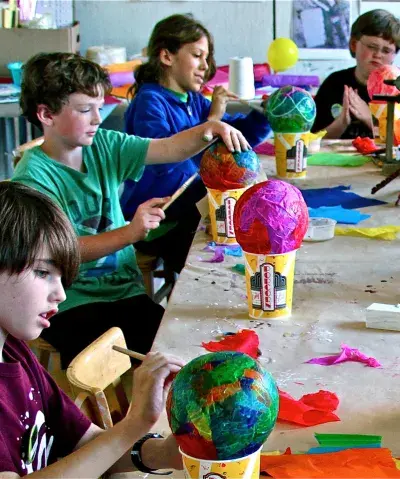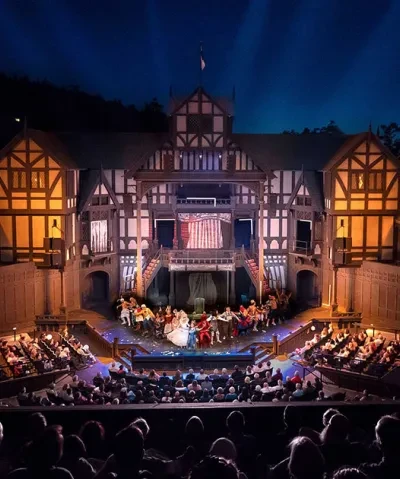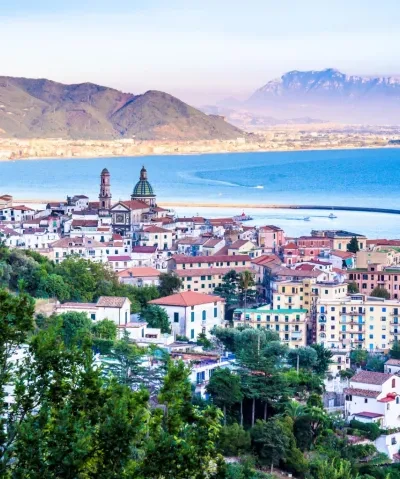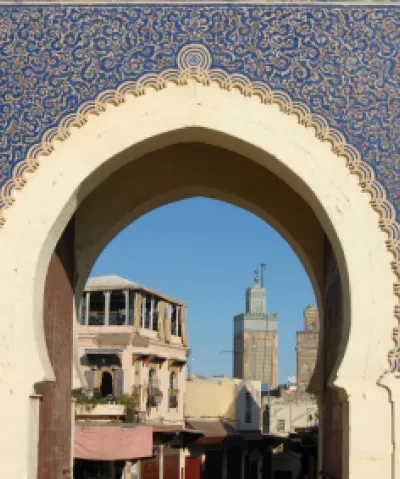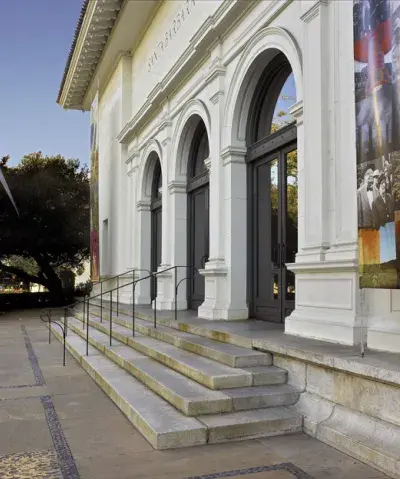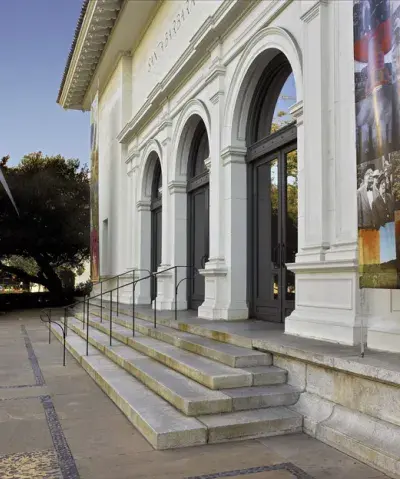Tireless Volunteer Gwen Baker Ensures a Lasting Legacy
One would be hard-pressed to explore the galleries of the Santa Barbara Museum of Art without running into Gwen Baker. A tireless volunteer, Gwen became involved with the Museum upon moving to Santa Barbara from Los Angeles, in 2006.
After being in town for only 3 months, Gwen quickly applied to SBMA's next docent class and joined the Women's Board. It wasn't long before Gwen realized that being involved with these two groups and the Museum greatly increased the quality of life for herself and husband Henry to an enormous extent. SBMA became, and still is, the center of their social and cultural lives.
Gwen says, "I love the way the museum touches so many levels of life in this community. From schoolchildren to the elderly—the Museum spans all segments of our community, and there is no one other organization that is reaching out in this many directions. Even after seven years here, SBMA continues to draw me in. The more I see, the more I love."
Gwen has always had a passion for art but without an art museum near her hometown of Huntington, West Virginia, she had to learn about art through books, dreaming about seeing works in person. Her particular area of interest is Asian art, especially Japanese art, which she and her husband Henry have collected throughout their life together. However, Gwen noted, "SBMA has really enhanced my appreciation of European and American art because the collection is so strong in these areas."
Gwen's involvement with SBMA continues to grow. She was recently elected to the Board of Trustees, continues to give regular docent tours, and is beginning her a second term as President of the Women's Board. Gwen's passion for the Women's Board is no secret. "Something special is going on there that I wish we could bottle" she says, adding "I always feel incredibly supported and encouraged. It is infectious. There is a feeling that whatever you take on, others will be there to help you make it a success."
In addition to these activities, Gwen has created a lasting legacy at SBMA by including the Museum in her estate plans. "When I begin my docent talk about the Museum, I tell people that the Museum is the result of citizens of this community—past, present, and future. When you walk through the collection and begin to see the names of the people who were the founders of the Museum, you see their legacy continue and inspire others to create a legacy as well. You can see that the stewardship and care is going to be there for what you give. It's here now and it's going to be here."
Of her bequest intentions, Gwen said, "I feel putting into writing our estate plans isn't something that we should be put off. We need to make this plan to be safe in the knowledge that the things which are important to us, will be decided by us, and acted upon by us."
Gwen feels lucky to know the Museum on many different levels. Her participation in the Legacy Society gives her great confidence and pleasure to know that SBMA will benefit from her passion for art. "I just want to be helpful and to be a part of the wonderful things happening at our Museum."
Clay Tedeschi: Leaving a Lasting Impact
Born and raised in Connecticut, Clay Tedeschi moved to Santa Barbara more than 30 years ago after working in Estates and Trusts at a prestigious law firm in New York City. After moving to Santa Barbara he established CT/Design, which has been providing architectural and interior design services in southern California for more than a quarter century.
Clay's eye for art and life-long exposure to beautiful things fostered a desire to collect. The first piece he acquired while living in Santa Barbara was Inkstone and Brush by Shibata Zeshin, described by Clay as "one of my most prized pieces, something I find personal and unique."
Zeshin was a prolific artist working in a wide range of media and subjects during the vibrant era of Meiji Restoration (1868-1912), Japan's entrance to the modern world. He was one of the few Japanese artists to attain notoriety in the West during his lifetime. His paintings, lacquerware, and ceramics were included in the World's Fair of 1873 (Vienna), 1876 (Philadelphia), and 1988 (Paris). This painting demonstrates Zeshin's ease and excellence in handling the brush, as well as in producing a naturalistic style he learned from his Maruyama-Shijo teachers in Kyoto.
Through this gift, Clay joined others in the Legacy Society, who have established a planned gift, ensuring that generations to come will be able to enjoy the Museum.
Nancy Schlosser: A Charitable Lead Trust to Help Support Education Programs
Nancy Schlosser, a member of SBMA's Legacy Society, established a Charitable Lead Trust with distributions to be made on an annual basis for ten years for a total of $1.1 million. The emphasis of support from the Schlosser Family Trust will be to help fund the Museum's family programming, most of which are free to the community, including Studio Sundays on the Front Steps, family materials, and activities in the Family Resource Center.
Of this gift, Nancy said, "We are so pleased to be able to make such a gift to the Museum's Education Department. We feel the programs that SBMA provides to the community are an invaluable resource." She adds "We were inspired by others who have been generous, and we hope this act will continue to encourage others to ensure the Museum's work of educational outreach and programming continues for generations to come."
Nancy Schlosser and her late husband Bill have been Members of SBMA at the Benefactors Circle level since 1961, and they frequently participated in the Museum's Travel Program. Mrs. Schlosser joined the Museum's Board of Trustees in 2009, has been Chair of the Education Committee since 2010, and has either served, or is currently serving, on the Audit, Buildings and Grounds, Collections, Education, and Governance and Nominated Committees. She is also a member of two curatorial support groups; PhotoFutures since 2009, and Dead Artists Society since 2011.
Pasty Hicks, SBMA's Director of Education says, "Nancy has been an exemplary, dynamic, and passionate supporter of the Museum's education programs. Her long-time enthusiasm for art and her own experience as a docent have contributed to her active involvement in SBMA's education programs and events on a hands-on level. Nancy continues to be one of our greatest ambassadors- in the galleries with students, following a docent tour, attending Atelier, films, and lectures. This extremely generous gift from the Schlosser Family Trust is the capstone to her long-term support and will ensure that the programs she has championed for families remain secure."
June Celmayster: Inspired by a Passion for Art – Charitable Remainder Trust
Establishing a Charitable Remainder Trust is a powerful way to make a planned gift to the Santa Barbara Museum of Art. This type of gift provides essential funding to SBMA while also providing financial support to oneself or family in the future. A Charitable Remainder Trust can be used to generate quarterly income for life, remove the capital gains tax on gifts of appreciated assets, achieve a charitable income tax deduction, and create both gift and estate tax savings. For a specific term, the trust makes annual payments to the beneficiary, at the end of which the assets are passed on to the designated charities.
It is through this type of gift that June Celmayster was able to establish a legacy at SBMA, achieving both her philanthropic goals as well as personal goals. Her commitment to the Museum spanned over 20 years, beginning when June first became a Member and docent at the Museum. June spent countless hours studying, researching, and reading about SBMA's collection and knew first-hand the importance of the education program. To ensure support of SBMA's extensive educational programming, she made a legacy gift. Due, in part, to her generosity, children are connected to excellent art education opportunities and enjoy a process that helps them develop the self-esteem, self-discipline, cooperation and self-motivation necessary for success in life.
Lorna Hedges
“The Museum has always been very special to me," reports Life Honorary Trustee and Legacy Society member Lorna Hedges who has given her time, energy, and passion to the Santa Barbara Museum of Art since she became a Member and volunteer in 1969. Lorna’s heart and mind were opened to art museums when she first visited the Nelson-Atkins Museum of Art in Kansas City, MO at age 12. Years later, she fell in love with SBMA when she walked into it for the first time while on vacation in 1950. Her first project was helping to start the Museum Shop (then located where Emmons Gallery is today), and since then she has been involved in aspects of Museum life from being a docent, to helping found the Ridley-Tree Education Center at McCormick House in 1991.
Lorna will tell you, “Your community is only as good as what you put into it," and she couldn’t imagine Santa Barbara without SBMA. Her passion for the Museum has contributed to its success, but Lorna is the first to tell you that SBMA could never have achieved the status it has today without the many people who have volunteered their time and talent over the last 74 years. She has served in several roles including President of the Docent Council and Chair of the Oral History Program, as well as a member of the Education Committee, Museum Service Council, Membership Committee, Nominating Committee, Ridley-Tree Education Center at McCormick House Advisory Committee, Library Committee, and Park Wing Opening Committee. She also has served on several other committees including Personnel, Strategic Planning, Finance, Building & Grounds, various Development Committees, and several ad hoc fundraising committees. Lorna has served as Secretary and Vice President of the SBMA Board of Trustees and was elected Life Honorary Trustee in 1997.
While her favorite painting in the Museum’s collection is Rhododendron (ca. 1905) by Piet Mondrian (it vibrates), or Hans Hofmann's Simplex Munditis (1962), over the years, photography came to capture her imagination. Her dedicated support of the curatorial support group PhotoFutures and the Museum’s photography department has allowed SBMA to acquire seven photographs over the past ten years. Mary Frey’s Barn Owl (1993) and Hibi’s Me-chan (1993) by Yuichi Hibi, recently on view, which were gifted to the Museum or purchased with Lorna’s generous support. The legacy of Lorna Hedges will partially be her ultimate gift to SBMA through her estate plan, but more importantly, it is and will be the example she has set for us through the extraordinary amount of time, passion, and dedication she’s demonstrated for the Santa Barbara Museum of Art for so many years.
Gloria Rubin
If SBMA Legacy Society member Gloria Rubin ever happens to invite you for lunch or dinner at her home, say “Yes!” Allow yourself plenty of time for a delicious meal, stimulating conversation, and a tour of her art collection, which includes works by Jose de Creeft, Morris Broderson, Ricardo Martinez de Hoyos, and a 7th-century sandstone head of Vishnu, which will appear in the upcoming Indian art exhibition in 2016. Born in Dover, Delaware and the youngest of four, Gloria developed a love of art and nature at an early age. She adored her father, Dr. Morris Zurkow, a large animal veterinarian, who often took Gloria with him on appointments, driving in his Model T as far as 60 miles between farms on narrow dirt roads. While waiting for her father during these visits, Gloria absorbed her surroundings, often painting the landscape and buildings on the farms.
Gloria attended Ohio State University, earning a BA in Fine Arts while fitting in a summer semester at Parsons School of Interior Design in New York City. In 1947, Gloria moved to New York where she met her husband Henry on a blind date in March 1953. It was a quick romance; they were engaged in August and married in December of the same year. Henry and Gloria were soul mates with similar interests in jazz and classical music, art, ballet, museums, and sports. Among Gloria’s first art purchases was a watercolor by Maine artist William Thom from a gallery on 57th Street in midtown Manhattan, which she bought as a gift for Henry. It still hangs in her home today. Other early art purchases included paintings by Ellis Wilson, Lawrence Lebduska, and a wood Jose de Creeft sculpture, which Gloria and Henry bought as a present to each other in honor of their 9th anniversary. They fell in love with the art of Morris Broderson when they saw an exhibition of his work at the Whitney Museum. In 1961, while on vacation in California, Gloria and Henry drove down the coast to the Ankrum Gallery which represented Broderson. The Rubins “hit it off” with the artist instantly and were invited to his studio. “We couldn’t resist and purchased several of his paintings on our first studio visit.” A favorite work, Children Blowing Dandelions (1961), is beautifully hung in Gloria’s dining room, providing an easy place to rest one’s eyes while enjoying paella or a delicious steak, with the perfect wine to match.
Gloria and Henry moved to Santa Barbara in 1989, and a year later met Jeanne and Bill Jennings. Bill was a docent at SBMA, and upon a visit to their home, he was taken with their collection and suggested that Gloria and Henry meet Diana du Pont, the SBMA Curator of Modern and Contemporary Art, who had been searching for a work by Martinez de Hoyos to borrow for an exhibition at SBMA. The rest is history. Gloria has loaned the Martinez de Hoyos paintings to the Museum several times now, the latest in 2013 for the Myth and Materiality exhibition curated by SBMA Assistant Curator Patricia Lee.
Henry passed away four years ago, but Gloria remembers him through the art, music, and many cultural interests they shared. Today her artistic interests have evolved towards the abstract. When asked what she would add to her collection if she were still purchasing, Gloria replied that she would be most interested in buying Mark Rothko, Wayne Thiebaud, Wolf Kahn, and Clifford Still.
The legacy of Gloria Rubin will partially be her estate gift of extraordinary works of contemporary art to the Santa Barbara Museum of Art. More important, however, is the example she sets and shares with all of us—of life lived by an intelligent and curious person in love with Henry, nature, art, and culture in its many forms. Gloria personifies SBMA’s mission of integrating art into the lives of people. She lives with and appreciates art every day.
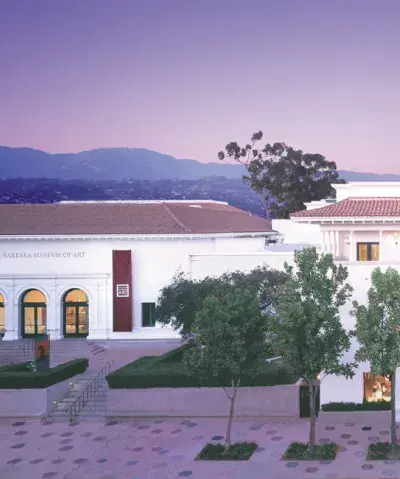
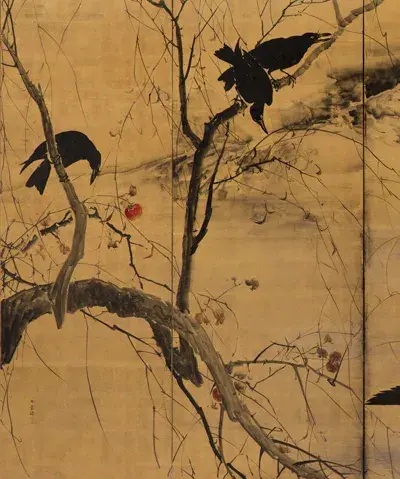
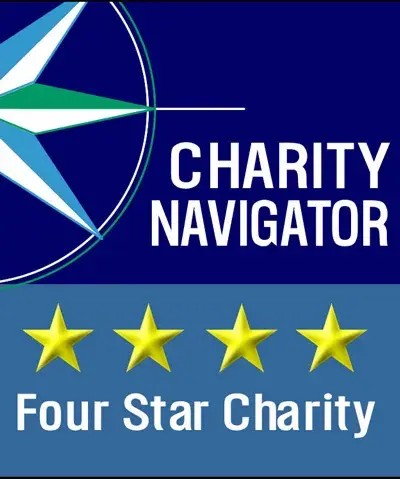
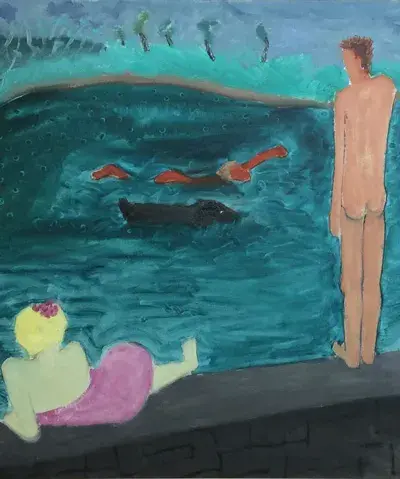
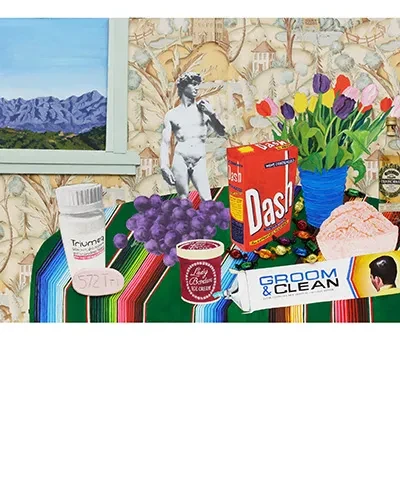

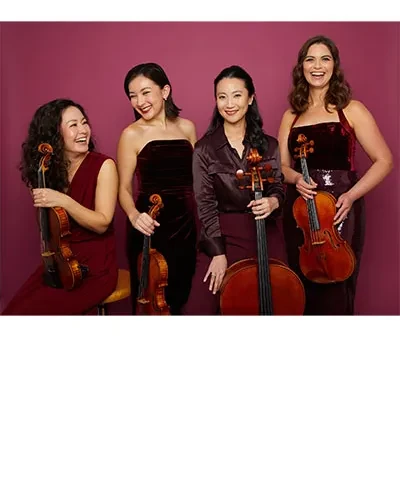

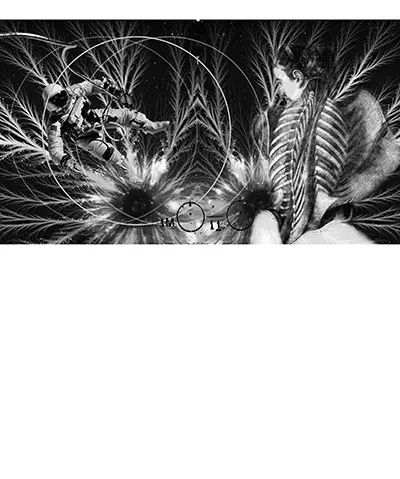
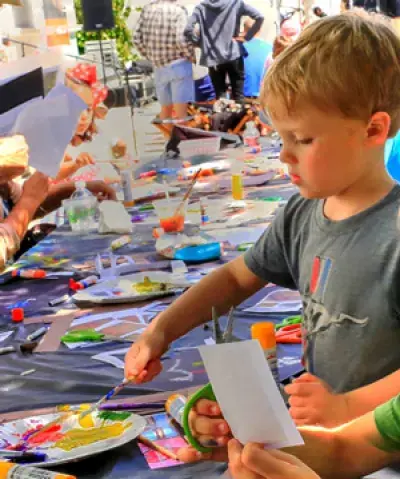
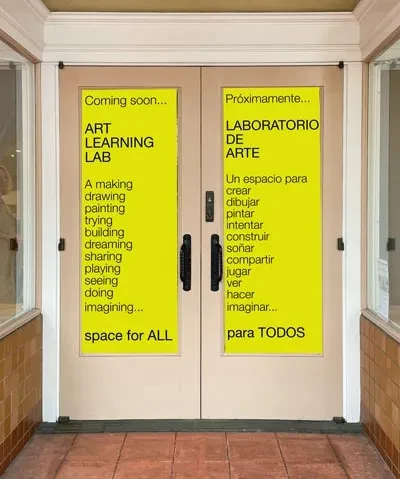
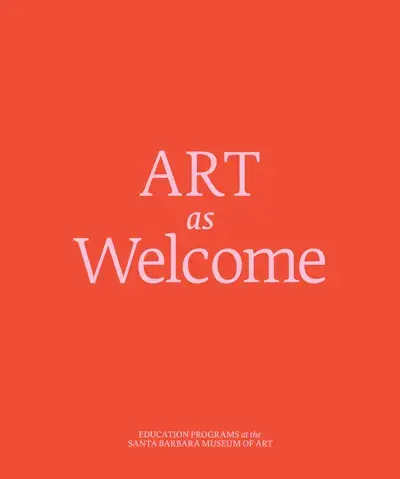
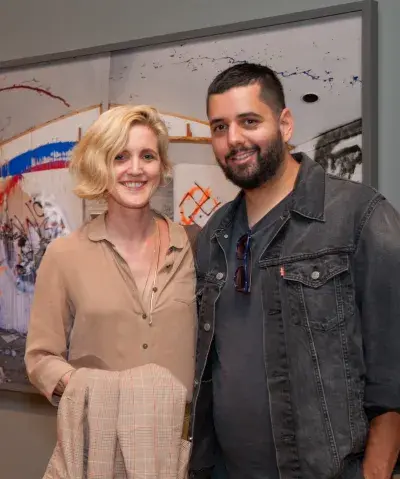
![memberseve[1]](https://www.sbma.net/sites/default/files/styles/menu_thumbnail_400_480/public/menu/memberseve%5B1%5D.jpg.webp?itok=hIz01lpc)
